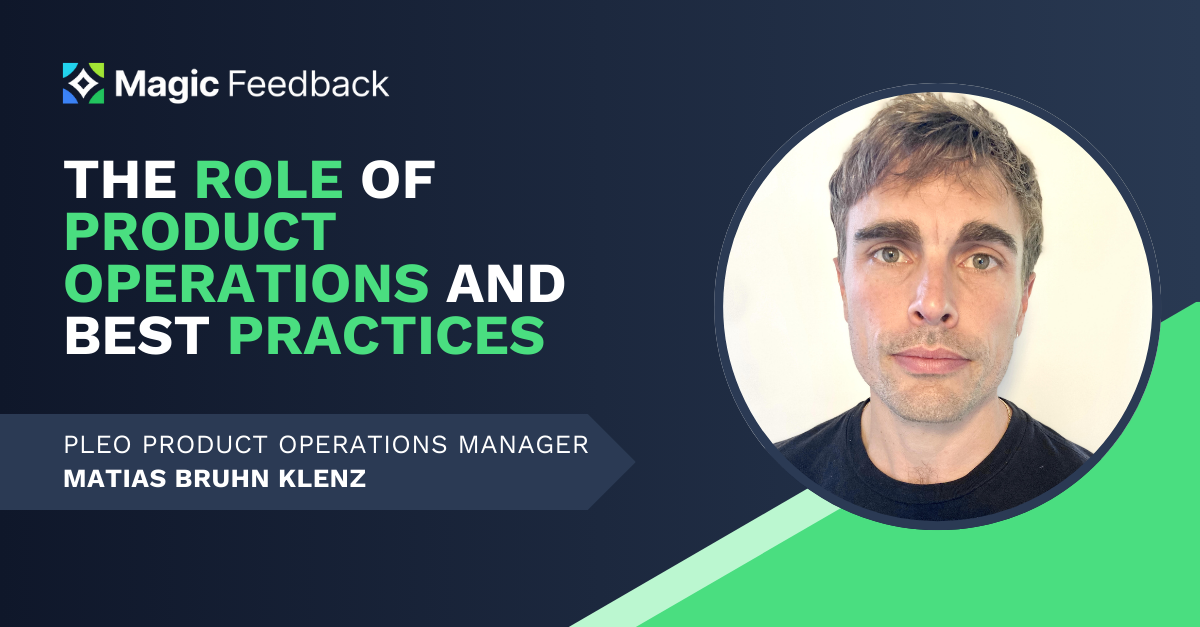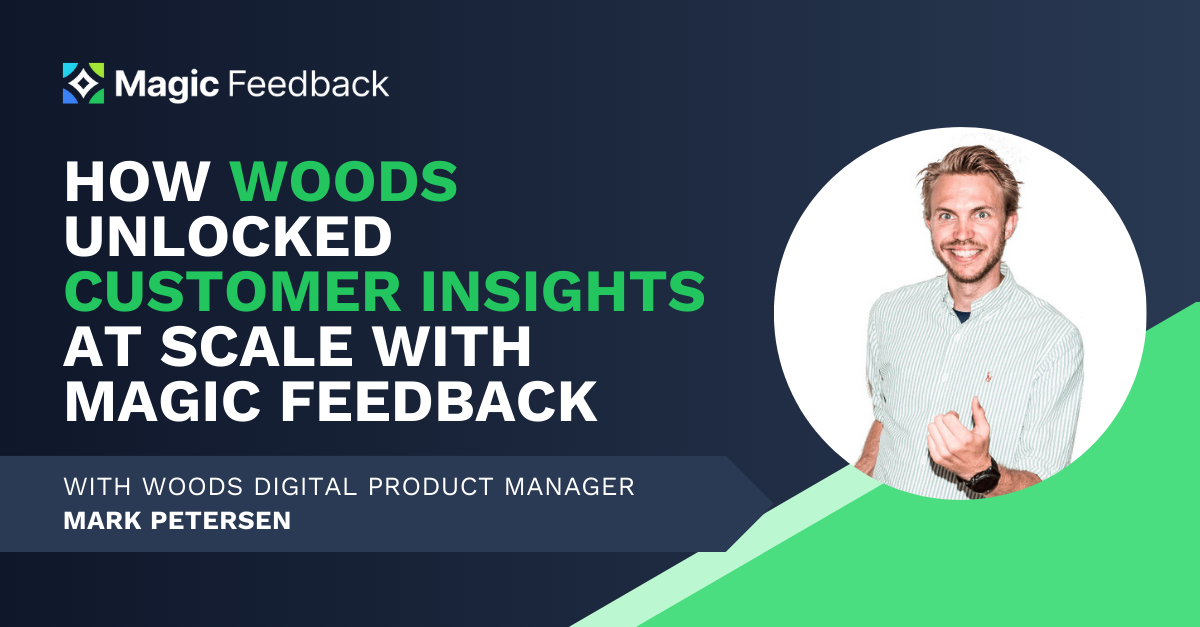
In this thought leadership article, I’m speaking with product operation manager, Matias Bruhn Klenz, about what it’s like working on product operations. Matias has spent years as a senior product manager and later transitioned into the role of product operations manager. In this article, he shares his learnings and advice on what it’s like working in product operations and how to be successful in it.
To kick things off, what is product operations about? What does it actually mean to you at Pleo?
“In our team and at Pleo, we actually don’t call it ProductOps. We are mixed up a bit in something we call Maker Operations, which actually covers more than just products. It’s about everything we make, build and product, so not just in product management, but also in engineering, design, analytics and how we play together. The mission in our team is to make it easy to run high performing teams and carry out individual work.”
But how do you actually make it easy to run high performing teams? What does the reality of that mission look like in practice?
“In reality, it’s about both supporting the things we do well and making them easier to do by offering tooling, processes, documentation, and standardization where it needs to be used.”
Matias went on to add a bit more context to how it works in practice:
“And then it’s also about the enablement part. Once in a while we need to be out there digging into a specific topic, helping and coaching, or do workshops to help enablement.”
I was intrigued about the potentially broad range of tasks that you could do as a product operations manager and asked if Matias could give some concrete examples:
“It can be anything from helping to describe how we can most easily do some A/B tests in this setup we have, to how you can become more outcome-driven and work well with outcomes. It’s also tasks like redefining how we do continuous planning in close collaboration with people in senior leadership. So it’s a really broad range of tasks you do in product ops.”
So how does Matias look at himself as a product operations manager in the context of his colleagues?
“You are often the glue that is needed for everything to function. Something happens at a point where the company becomes a certain size. Maybe you are suddenly 10 teams, and you all have to create roadmaps together, navigating different stakeholders with different needs, and things suddenly become slightly more complex to organize and service. Who sets up processes? Who makes sure it works? Who helps educate and teach people how to use the tools required? And it’s things like that we take care of.”
It makes sense, but at the same time, it seems like the complexity of some of the tasks can be difficult to approach. How do you approach these tasks as a product operations manager?
“Yes it’s definitely complex and something I think about. I use my past experience as a product manager a lot. The reality is that many of the things we do are exactly the same as when you sit in a product team. If we were to create a roadmap process to service 35 product teams and 500 consumers, then there is discovery involved. You need to talk to users, make a prototype and test it with a few teams to start with, run a beta program, roll it out to the rest of the company with a go-to-market strategy. In reality, I think it’s many of the same things you do as a product manager.”
For someone contemplating to go into the role of product operations manager, based on your experience, what is something you need to get really good at?
“First of all, you need to be really sharp in your communication, because regardless of what we do and how well it ends up working, you have to understand the context you operate in. Everyone we work with already has their hands full, so when we come to them with some initiative, it’s going to require some time from them and break their rhythm. It’s the absolute hardest part of our job to figure out how we can plant new initiatives successfully.”
I asked Matias if he could elaborate a bit on what makes it the hardest part of the job?
“Because it doesn’t really matter that we make all sorts of cool solutions if we can’t figure out how to put them in the hands of the users. It’s extremely important that people don’t have a bad onboarding experience, where they never experience the value of the solution. So it’s a lot about figuring out when teams can take the time to absorb things that we are doing.”
Matias also emphasized that the role is not always about big projects and implementations:
“Sometimes it’s about if you can just help a team stay on track in terms of understanding how they should use some tool, or how they can get hold of some data, or who to ask about something. As a product operations manager you have a big network of contacts and it’s essential to create great relationships where you become the team’s trusted partner.”
Matias goes on to add:
“So sometimes you get to have some interactions during the day where you feel a bit like a support agent in reality. And that’s fine. And then sometimes you have to pick up on it when you’ve been asked the same questions 10 times. It could be an opportunity to improve something in our documentation or how we surface it. So the role provides a super wide palette of work and you should probably be someone who enjoys working on many different things.”
Now we talked a lot about all the different things you can do and the wide range of tasks that can land at your desk. What is something you should be cautious about doing as a product operations manager?
“Yes, you have to avoid getting caught up in always trying to make things better tomorrow. Because while you might see how it needs to be done, and you might be able to execute quickly, you still have to understand the context you are operating in. All teams are fully engaged in what they need to do in their day to day and you need to make sure they have the capacity and energy to absorb it.”
Matias goes on to add:
“If we just launch new systems and tools and processes, then people can’t keep up with that change. And they are not supposed to spend all their energy absorbing what we bring. So you need to be quite careful sometimes with how optimistic you are and how much you can change. The job requires respect for the fact that their primary task is not to have to learn new tools and new processes. Their job is to build great products, and we must support them in that in the best possible way. Part of that is to be aware of their context often and to make sure we don’t overextend, but deliver things in a way that helps them.”
We talked a lot about your role, but the role of product operations manager is fairly new in Denmark and let alone Europe. What is your perception of the role in Denmark and the European context?
“That is actually a good question. I must admit, there is not too much out there and requires some searching. I’m not aware of any communities out there. It’s not like having the role of product manager on LinkedIn, where you probably get some outbound requests and maybe get invited to product events. So for me at least, it’s still very much a niche role in Denmark and Europe broadly speaking.”
Matias goes on to add:
“It’s actually interesting why it’s taken so long for product operations to get mainstream, because in all other areas it’s taken off quite quickly, like revenue operations, marketing operations etc. But for some reason, it’s moving slower in product. Maybe it’s because there are fewer product managers than engineers. And historically, the role of a product manager has been quite broad, and sometimes they take upon themselves a lot of the work in product operations.”
So how do you get better as a product operations manager?
“A long answer short, I think it’s important to really just learn from the challenges your teams are having. And then in addition, I follow some podcasts with product operation people attending. I’m very much into product enablement. So for me it’s not challenging that the community in Denmark is not big, I think there are a lot of resources you can use from different places. I personally like to follow John Cutler on the topic of product enablement, and another vital resource for me is svpg.com.”
As we approached the end of the interview, I asked Matias if he had any advice that he personally took to heart and wanted to share with us?
“Yes, the first thing that came to my mind was from my first manager. He often said to move ahead and be prepared to take the heat if it comes.. Or in other words, once in a while you have to just act and believe in the direction you have set out to do something. Reflecting whether something is a type 1 or type 2 decision usually helps me navigate applying this approach. If it’s a type 2 decision we can change direction later without too much drama so “go ahead and take the heat” is often the most effective approach. ”
Matias goes on to add:
“It doesn’t matter much if we hit it 100% right the first time. It’s actually better that we move forward and then iterate or change things later. I think that mentality is important because in big setups things can quickly feel too complex to do anything in. And sometimes you just have to move forward and believe that you will find a solution along the way.”


